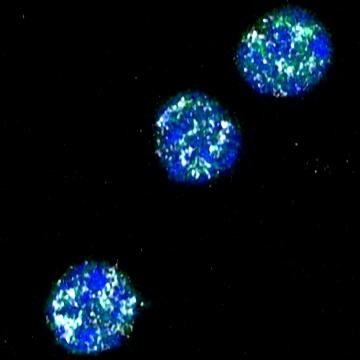
Credit: HKUST
Muscle stem cells, the reserve stem cell in the skeletal muscles, are responsible for muscle repair after damage. They are the ‘regenerative medicine’ to cure muscle diseases and muscle damages. In a healthy uninjured condition, muscle stem cells are in quiescence, a dormant state, to preserve them well. Whenever there is muscle damage, they will wake up instantly, contribute themselves to build new muscles.
If this dormant state is loosely controlled, muscle stem cells will be wasted when there is no need for repair. If this dormant state is kept too tight, the muscle stem cells could not wake up when they are needed to contribute to muscle repair.
How muscle stem cells control this balance of quiescence remains a topic of heightened interest. Recently, a team of scientists at the Hong Kong University of Science and Technology revealed that intron detention (IR) is a key to the mechanism; when stem cell enters quiescence exit, Dek releases conserved introns, which allow the cell to be activated.
“Using skeletal muscle stem cells, also called satellite cells (SCs), we demonstrated prevalent intron retention (IR) in the transcriptome of quiescent SCs (QSCs),” said Prof. Tom CHEUNG, lead researcher of the team and SH Ho Associate Professor of Life Science at HKUST. “Intron-retained transcripts found in QSCs are essential for fundamental functions including RNA splicing, protein translation, cell-cycle entry, and lineage specification. Our analysis reveals that phosphorylated Dek protein modulates IR during SC quiescence exit.”
While Dek protein is not present in QSCs, Dek overexpression in vivo results in a global decrease of IR, quiescence dysregulation, premature differentiation of QSCs, and undermined muscle regeneration. The researchers also found in their IR analysis on hundreds of public RNA-seq data that IR is conserved among quiescent adult stem cells, which suggests that IR functions as a conserved post-transcriptional regulation mechanism that plays an important role during stem cell quiescence exit.
Their findings were published online in the journal Developmental Cell on June 4, 2020.
“IR has emerged as an important post-transcriptional regulatory mechanism supporting the complexity of gene expression regulation and cell-state transition,” noted Prof. Cheung. “We observed around 1,200 genes possessing IR in QSCs, but in many transcripts, only selective introns were retained. The prevalence of IR among quiescent adult stem cells implies its functional importance in stem cell quiescence. Findings in the study will play a fundamental role in the field as scientists continue the quest to map out the mechanism of stem cell quiescence and stem cell-mediated tissue regeneration.”
###
Media Contact
Johnny Tam
[email protected]
Related Journal Article
http://dx.




